Want to know how you can make a positive impact on marine life while enjoying your fishing trips? Sustainable Line Fishing offers key practices that benefit both anglers and the environment.
From eco-friendly gear choices to responsible catch handling techniques, each step plays an important role in preserving our oceans. But what are the specific best practices that can help you become a more sustainable angler?
Let's explore and uncover the essential tips for ethical and eco-conscious line fishing practices that will leave you feeling empowered to make a difference.
Key Takeaways
- Reduce bycatch and protect marine species
- Use appropriate gear and techniques for sustainable hand lining
- Practice conservation methods to preserve marine biodiversity
- Engage communities for responsible fishing practices
Sustainable Line Fishing Benefits
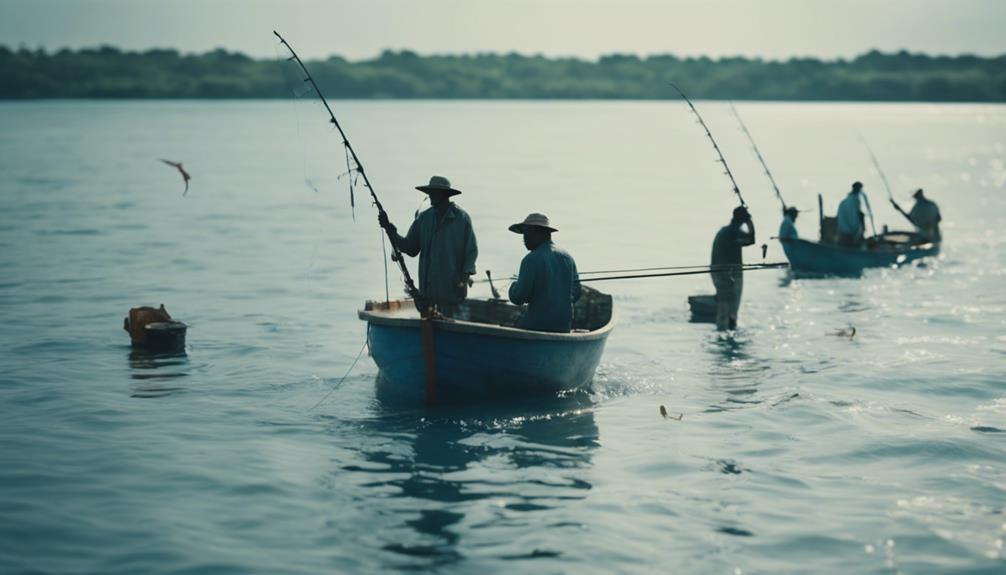
When engaging in sustainable line fishing, you directly contribute to reducing bycatch and protecting non-targeted species. By using this method, you help in safeguarding marine species and promoting sustainability in fishing practices.
Sustainable line fishing focuses on targeting specific fish species, which aids in maintaining healthy fish populations and preserving marine ecosystems. This approach minimizes the negative impact on marine life compared to other fishing techniques.
Gear Selection for Hand Lining
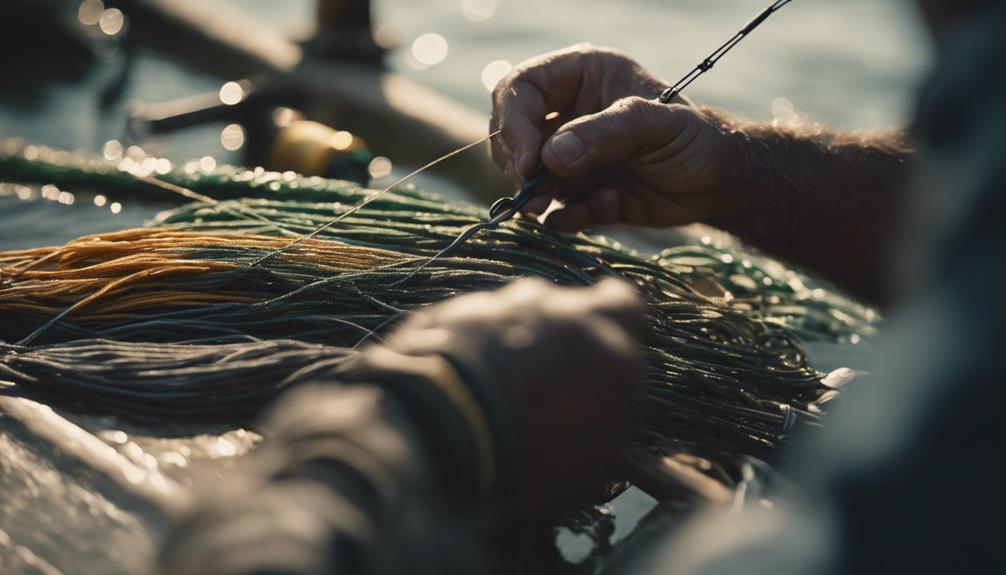
Selecting the appropriate gear for hand lining is crucial for successful and sustainable fishing practices. Hand lining, a traditional and eco-friendly fishing method, requires minimal gear to reduce habitat damage and allow for selective fishing of target species.
When choosing your fishing gear for hand lining, opt for a sturdy fishing line that can withstand the weight of your catch. Consider the size of the hook to match the target species you aim to catch. Additionally, you may want to include weights or lures to enhance bait presentation and attract fish effectively.
With the right gear, you can control bait movement and depth more precisely, increasing your chances of a successful and sustainable fishing trip.
Conservation Practices for Line Fishing
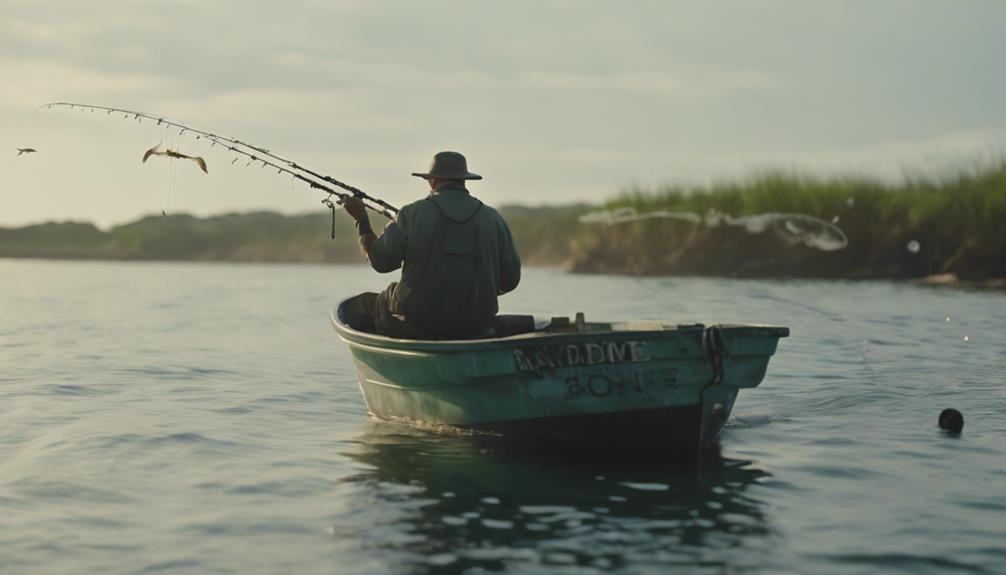
Curious how you can contribute to the conservation of marine ecosystems through line fishing practices?
Line fishing supports marine conservation by promoting selective fishing and using sustainable gear. By adhering to fishing regulations and catch limits set by organizations like NOAA Fisheries, you help protect marine ecosystems and maintain fish populations.
The low impact nature of line fishing minimizes habitat damage and reduces bycatch, preserving marine biodiversity. Choosing this eco-conscious method over more destructive practices like trawling can make a significant difference in the long-term health of ocean environments.
Embrace line fishing as a responsible angler to play your part in supporting sustainable fishing practices and safeguarding the delicate balance of marine life.
Sustainable Catch Handling Techniques
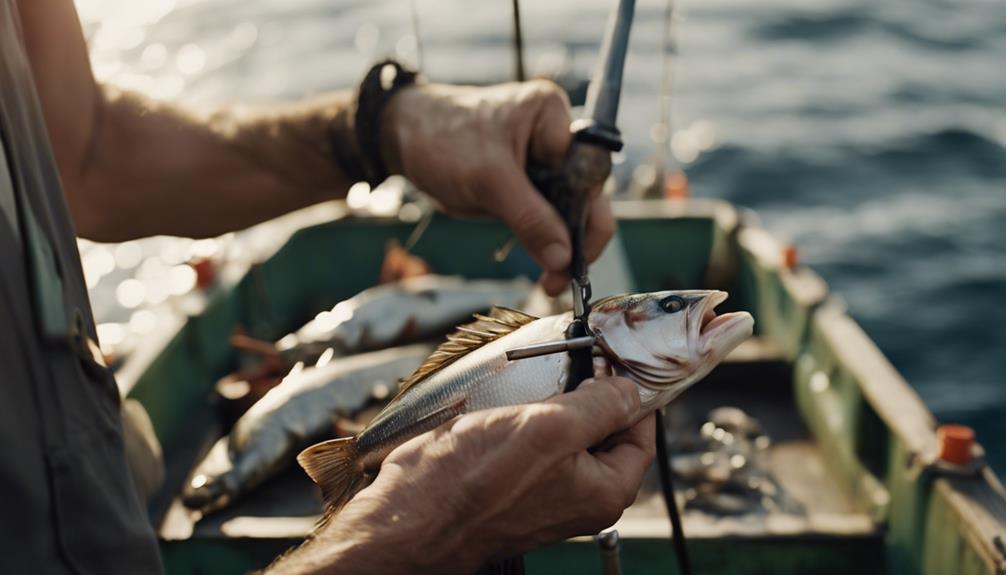
To handle your catches sustainably, prioritize minimizing handling time and using wet hands or gloves for protection. When catching specific species, positive impact is achieved by handling them carefully. Protecting fish populations is vital for the future, so avoiding harm to fish is essential.
Your fishing aims should include minimizing the impact on the health of the fish you catch. By conserving fish now, you help us make certain there are fish left for future generations. Prioritize sustainability in your catch handling techniques to make a difference.
Quick and gentle handling techniques can make all the difference in the survival rates of released fish. Give your catches the best chance at a healthy future.
Community Engagement in Fishing Practices
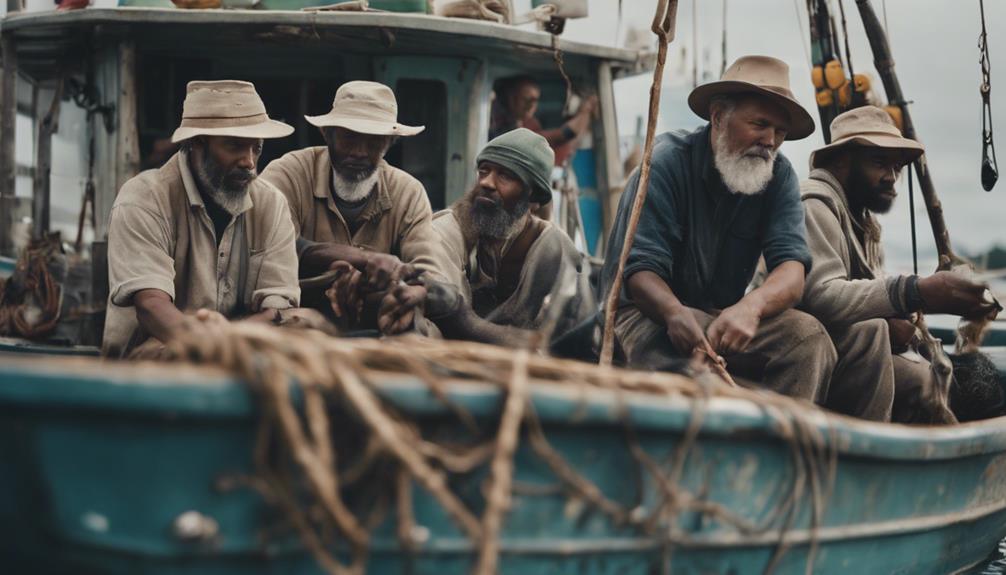
Engage local communities in sustainable fishing initiatives to promote responsible practices and conservation efforts. Community engagement plays an important role in fostering long-term sustainability for marine life.
By involving locals in fishing practices, we tap into their valuable local knowledge, which enhances the effectiveness of conservation programs and sustainable fishing methods. Collaborating with community members also instills a sense of ownership and responsibility towards marine ecosystems, encouraging tailored solutions to address specific fishing challenges.
Through this engagement, we can work together to overcome obstacles and safeguard the well-being of marine life for future generations. Embracing community participation not only benefits the environment but also strengthens the foundation for responsible fishing practices and conservation efforts.
Conclusion
To sum up, remember to always practice sustainable fishing techniques like using barbless hooks and eco-friendly gear, following catch limits, and disposing of equipment properly.
By making these simple changes in your fishing habits, you can help safeguard marine ecosystems and secure the long-term health of fish populations.
Keep up the good work and continue to contribute to conservation efforts for a brighter future for our oceans!
👨👩👧👦 Dwight’s a married dad of 4 who loves to cast a line 🎣 into both fresh and salt waters. His heart belongs to his family and the sea. 🌊 #FamilyMan #FishingLife #DadOf4 🐟✨

